Bone-setters, healers, sex clinics — Ratan Vaswani is interested in them all. His project, Medicine Corner, opens at the Dharavi Biennale and explores the baffling, rich cultures of codified and alternative medicine across India, finds Kareena Gianani
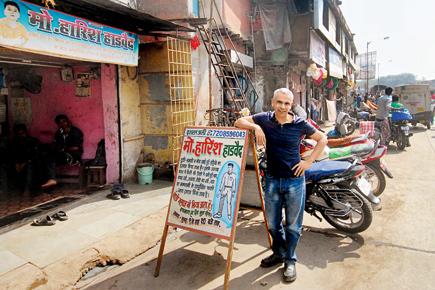
Ratan Vaswani
 “Hold the salt water in your hand,” the man with the orange beard told Ratan Vaswani, making a cupping gesture.
“Hold the salt water in your hand,” the man with the orange beard told Ratan Vaswani, making a cupping gesture.
“Block one nostril while you breathe the water into the other, then blow your nose.”
ADVERTISEMENT
Overcoming his British queasiness, Vaswani, the 54-year-old cultural programmer, did as he was told.
Then, he handed over a few hundred rupees, stepped a little unsteady on his feet out of the kiosk and back into a sea of people on the roadside in a working-class neighbourhood of Mumbai.
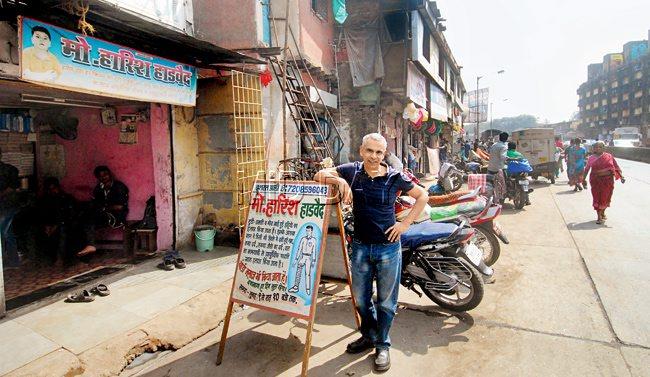
Cultural Programmer Ratan Vaswani outside a bone-setter’s clinic at Dharavi. Pic/Sameer Markande
Nasal irrigation is generally regarded as an Ayurvedic and therefore ‘Hindu’ practice but it was a Muslim, the man with the henna-dyed orange beard, who instructed Vaswani. Vaswani, a linguist and cultural programmer, wondered whether he had been ripped off.
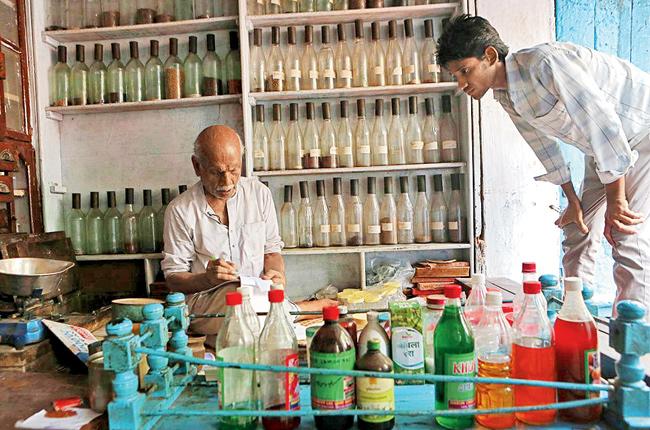
The hakim in Delhi sees hundreds of patients daily
Did the bearded man believe in the practice? Did Vaswani? Was it a transaction between a patient and a healer? Or between a gullible fool and a quack?
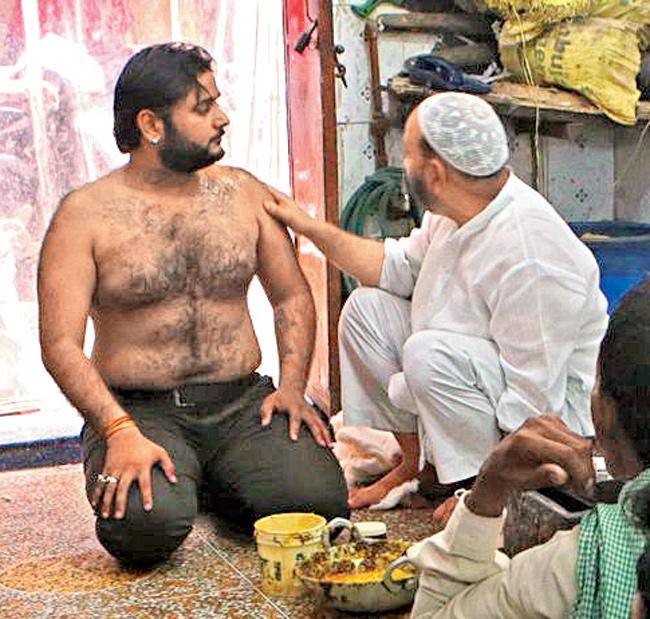
A bone-setter examines a patient recovering from a major shoulder surgery. The patient was satisfied after a three-month-long therapy. Pics courtesy/Wellcome Library, London
Half an hour later, back in his hotel room, Vaswani flicked the air-conditioning on and flopped, sticky with sweat, on the bed, not quite sure then or even now, 18 months later, what he had experienced.
“I felt nauseated. But my chronically blocked sinuses were clearer than they had been for ages,” he says, smiling across me at a plush Bandra café.
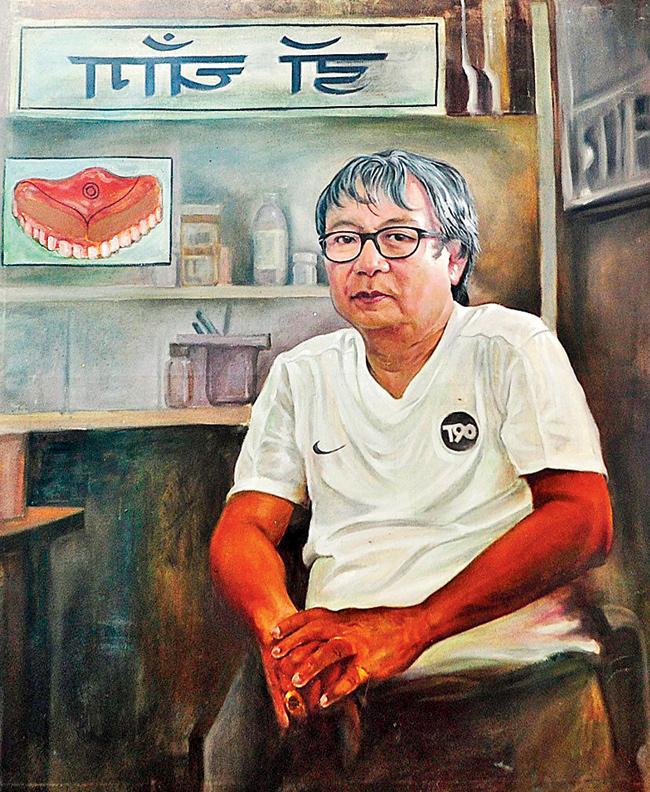
Handpainted sign artist Sham Jadhav’s painting of Dr Chang, a Dharavi-based dentist, which will be exhibited at the Dharavi Biennale
Vaswani is the project manager of Medicine Corner, which explores India’s rich plurality of cultures of medicine, healing and wellbeing over time, knowledge systems and geography. It is funded by the London-based Wellcome Collection, the public cultural venue in London of the Wellcome Trust — a biomedical research charity which the Financial Times described as UK’s largest provider of non-governmental funding for scientific research and one of the largest providers in the world.
Medicine Corner’s first exhibition, Healers, will debut at the Dharavi Biennale on February 15, and will be followed by more exhibition, music, media, arts and live events across India, starting with Kolkata and Delhi. Medicine Corner’s centerpiece will be a major exhibition at the Chhatrapati Shivaji Maharaj Vaastu Sangrahalya (CSMVS) museum in the city between January and March 2016.

An illustration of a rhinoplasty conducted by Indian surgeons using Ayurvedic tools in 1793. The jottings are by English doctors who sent detailed diagrams back to the UK
At home and in shrines
“Medicine Corner explores the kaleidoscopically varied medical culture of codified Indian medicine (Ayurveda, Unani etc) and uncodified versions and cultures of wellbeing with tribal and indigenous roots. Right from the Tulsi plant in many Indian homes to ear-cleaners, healers, bone-setters, barbers, masseuses, piles clinics, kidney stone clinics, vyayamshalas, sex clinics — I am interested in the everyday and everybody of Indian medical cultural practices,” smiles Vaswani. Medicine Corner celebrates India’s relatively recent groundbreaking medical technology such as Jaipur Foot, but also turns its eye on medical “jugaad” the indigent take recourse to in absence of adequate public healthcare facilities in India.
“I am interested in exploring this feature of Indian street life and economy, and finding out how those living in extreme circumstances handle medical problems. Lay healers easily outnumber practitioners of biomedicine in India and sell an astonishing range of wares and services to passersby in this vast, informal economy. This documentation celebrates and interrogates the fascinating practices, their role in Indian civilisation and the challenges and opportunities they present for healing,” elaborates Vaswani.
He touches upon mental health, too, but takes an unusual approach — Vaswani documents families who turn to astrologers when in doubt. “I was fascinated by what happens to a family when they don’t have access to expensive shrinks, and often found that they turn to astrologers and passionately speak of their problems, which really seems to help them,” gleans Vaswani.
“The lay practitioners were sure baffled about my interest in their lives. But how could one not be? A hakim I met in South Delhi sees hundreds of patients a day, for instance. What was also significant is how the patients viewed this system. Almost every one of them told me how they would rather go to an allopathic doctor if they could afford it,” remembers Vaswani.
As part of Medicine Corner’s first show at Dharavi (supported by the British Council), city-based photographer Benita Fernando shot the healers around lay practitioners around Dharavi. Vaswani is interested in juxtaposing the documentary photography with historic art to valourise these centuries-old practices.
So, his Dharavi colleagues brought some of Mumbai’s handpainted sign artists on-board, and encouraged them to try another medium — oil painting — and paint the healers of Dharavi (see pic below). Vaswani is aware of how dismissive a more privileged layperson is of, say, the healer or bone-setter on the street, but believes they are as valid a representation like any other. “The exhibition at Dharavi is for everybody, of course, but it primarily of, by and for the people of Dharavi, because their lives, too, matter.
To further illustrate his point, Vaswani presses a key on his laptop before discussing another important arm of Medicine Corner and the focus of the forthcoming exhibition at CSMVS. It is a steel instrument, much like the surgical clamp, but curved at the end and clearly resembles a Great Hornbill’s mouth. “This is a centuries-old model of a clamp used by Ayurvedic practitioners to remove kidney stones,” reveals Vaswani.
Science is art
Vaswani will explore other baffling details, too. By juxtaposing scientific instruments as objects of art, he wants to highlight how India is mischaracterised as rooted in superstition, but the arrival of cutting-edge medical practices here, in fact, predate colonial medicine. “But India’s ancient and contemporary medical practices reveal secularism, heterodoxy and advances. For instance, the Wellcome Collection has pictorial documentation of a rhinoplasty conducted by Indian surgeons using Ayurvedic tools in 1793. It was witnessed by English doctors who sent back detailed diagrams and descriptions — their account helped give rise to modern plastic surgery, which may well be an Indian export to the West, not an import,” says Vaswani.
Between April 2013 and present, Vaswani has travelled across the country and documented lay practitioners in Mumbai, Delhi, Rajasthan, Haridwar and Kolkata, which remains his favourite city in the country. Medicine Corner has not left Vaswani unchanged either. “Everybody is in search of some meaning. Pounding the pavement across these cities, going into people’s homes and seeing them make sense of difficult circumstances gave me just that,” says Vaswani.
 Subscribe today by clicking the link and stay updated with the latest news!" Click here!
Subscribe today by clicking the link and stay updated with the latest news!" Click here!







